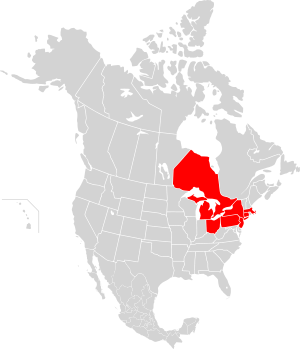Aug 14, 2013 is the 10-year anniversary of the eastern U.S. power outage
Aug 14, 2003 - Toledo Talk - Eastern U.S. power outage
Here in west Toledo, we had a strange power drain and outage at about 4:15 pm. The local AM radio stations, 1230, 1370, 1470, went off the air, and at 4:50 they are still off. Some of the local TV stations had blackout messages on their screens.
More from my Aug 14, 2003 Toledo Talk posting:
Power came back up here in West Toledo right away. I made the fatal mistake of tuning my battery-powered radio to FM [WCKY] or something like that. It's a country station and it's not saying a damn thing.After 20 minutes or more of no information, I changed to K100 and they were giving the news about the incident. It's not a terrorist act. It seems it's a natural power outage due to load.
There is still power out in places in Toledo. Traffic in Toledo is, of course, slow. There are power outages throughout the northeast U.S.
http://en.wikipedia.org/wiki/Northeast_blackout_of_2003
"This image shows states and provinces that experienced blackouts. Not all areas within these political boundaries were affected."

The report states that a generating plant in Eastlake, Ohio (a suburb of Cleveland) went offline amid high electrical demand, putting a strain on high-voltage power lines (located in a distant rural setting) which later went out of service when they came in contact with "overgrown trees". The cascading effect that resulted ultimately forced the shutdown of more than 100 power plants.This trip caused load to transfer to other transmission lines, which were not able to bear the load, tripping their relays. Once these multiple trips occurred, multiple generators suddenly lost parts of their loads, so they accelerated out of phase with the grid at different rates, and tripped out to prevent damage.
Aug 3, 2013 Toledo Blade story
Thursday, Aug. 14, 2003, started out as a typical hot summer day in Toledo. It was 69 degrees at 6 a.m., and by noon it had risen to a sizzling 84, although according to the RealFeel Temperature it felt like 99 degrees to anyone forced to be outside.#energy - #history - #blog_jrBy 2 p.m., the thermometer reached 88, the high for the day, and practically everyone in Ohio was scrambling to find ways to keep cool, including millions who cranked up their air conditioning.
Just two minutes after 2 p.m., a 345-kilovolt transmission line, which is among the highest-capacity power lines running through Ohio, began to stretch and sag because of the day’s heat and the large amounts of power it was required to ferry on such a hot day.
Eventually, a segment of that power line that runs through the village of Walton Hills, east of Cleveland, dipped low enough to touch a tree.
The line overloaded and then, as it was programmed to do, shut itself down.
That should have sent a computerized alarm to power grid operators at FirstEnergy Corp.’s control room in the small city of Wadsworth, about 15 miles west of Akron.
But a programming bug in the system’s software kept the utility’s grid operators from ever seeing the alarm.
Blind to what was happening, control operators also didn’t notice when another 345-kilovolt line — this one in Parma, south of Cleveland — overloaded and shut down just 63 minutes after the first line shut down. Twenty-seven minutes later, a third 345-kilovolt line sagged into a tree and shut down.
Over the next hour, three more high-voltage lines shut down, and by 4:10 p.m., with the outside temperature still 88 degrees, nearly 55 million people living in eight Great Lakes and northeast states and the Canadian province of Ontario were caught up in the second-largest power blackout in history.
The largest power outage occurred in Brazil in 1999.
In Toledo, the blackout’s full effect left most of the city without power at 34 seconds past 4:10 p.m.
Three seconds after Toledo went dark, the blackout hit Detroit and southeast Michigan, and one second later, Cleveland went dark. Northwest Ontario, New York, and northern New Jersey followed quickly.
By 4:13 p.m. the blackout was complete and utilities were left trying to figure out what happened and how to restore power.
Many areas had restored power by 9 p.m., but several parts of the northeast did not get power back until the next day, and some continued to have rolling brownouts.
By JR
- 729 words
created:
- updated:
source
- versions
Related articles
Toledo Neighborhoods - Mar 03, 2014
Mobile web predictions from November 2005 - Nov 05, 2014
Old West End Festival 2014 - Mar 21, 2015
Legendary Steelers coach Chuck Noll dies - Sep 02, 2014
The Stain and Korn shows from 1995. - Sep 02, 2014
more >>